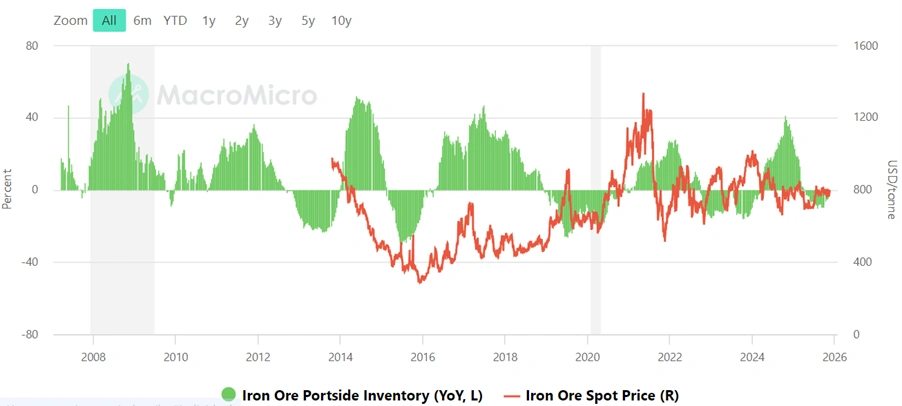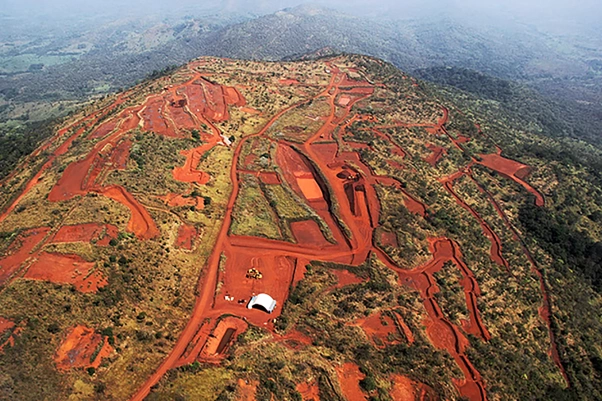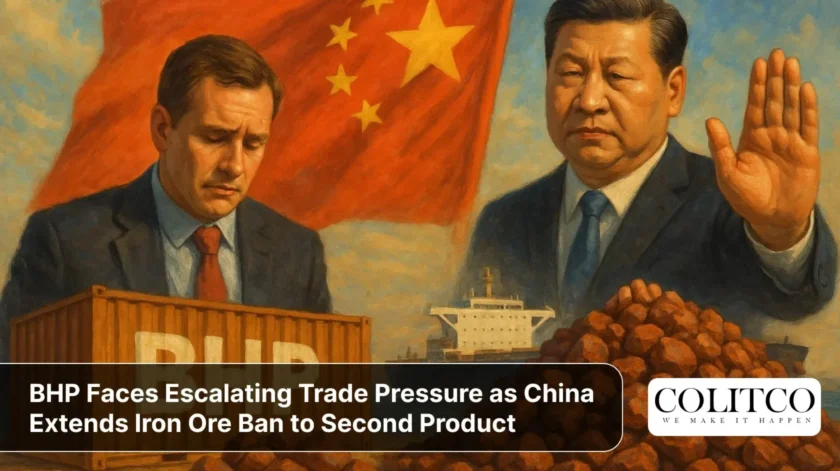Mining giant BHP Group finds itself caught in an escalating commercial standoff with China’s state purchasing authority. The dispute has widened this week with fresh restrictions targeting a second iron ore product from the Australian miner.
China Mineral Resources Group (CMRG) ordered domestic steel mills and traders to stop buying BHP’s Jinbao fines on 20 November. The directive applies to both seaborne shipments and existing stocks at Chinese ports.
This marks the second ban imposed within three months. CMRG first restricted purchases of BHP’s Jimblebar Blend Fines in September during stalled negotiations over the 2026 annual supply contract.
Contract Talks Drag Into Third Month
The restrictions centre on disagreements over pricing mechanisms for medium-grade iron ore. BHP and CMRG have been negotiating terms for next year’s supply since August, with little progress reported.
“CMRG told mills that they are not allowed to take delivery of Jinbao fines from ports in three days,” a source familiar with the matter told Reuters. “There might be a hustle and bustle at ports these few days.”
BHP declined to comment on commercial negotiations but confirmed discussions with CMRG remain ongoing. The Chinese purchasing group has not responded to media enquiries.
Industry analysts suggest CMRG targeted Jinbao fines strategically. The low-grade ore represents minimal trade volumes compared to BHP’s flagship Pilbara products. One source indicated the ban would avoid drastic market disruption while maintaining negotiating pressure.
Strategic Shift in China’s Purchasing Power
CMRG was established in July 2022 to consolidate iron ore procurement across China’s fragmented steel sector. The state-owned entity aims to leverage China’s dominant market position as the world’s largest iron ore consumer.
China imports approximately 1.2 billion tonnes of iron ore annually. BHP supplies roughly 13% of total Chinese imports, making it the nation’s third-largest supplier behind Rio Tinto and Vale.
BHP’s iron ore operations have historically dominated the company’s earnings. However, prices have declined 19% in FY25 to $82.13 per wet metric tonne, pressuring profit margins.
The current dispute reflects Beijing’s growing determination to shift from price-taker to price-maker in global commodity markets. CMRG’s centralized approach contrasts sharply with the decentralized purchasing model that previously gave miners greater negotiating flexibility.
Market Response and Price Dynamics
Despite the restrictions, iron ore prices have shown unexpected resilience. Benchmark 62% Fe fines reached a two-week high on Wednesday, even as Chinese crude steel output fell to its lowest level since December 2023.
The apparent paradox stems from tightening port inventories of medium-grade products. Stockpiles of Rio Tinto’s Pilbara Blend Fines dropped approximately 40% to 6.5 million tonnes by mid-November as Chinese mills substituted for the banned Jimblebar product.
Goldman Sachs recently raised its 2026 iron ore price forecast to $144 per tonne from $138, citing supply constraints and recovering demand fundamentals.

Portside iron ore inventories have declined sharply
Yuan Settlement Breakthrough
Amid the ongoing restrictions, BHP agreed in October to settle 30% of spot trade with China in yuan during Q4 2025. The arrangement marks a significant concession on currency terms and represents Beijing’s push for greater renminbi internationalization in commodity markets.
However, BHP set an “observation period” for the 2026 long-term contract, which will initially remain denominated in US dollars. This suggests both parties are testing new commercial frameworks before committing to permanent changes.
The yuan settlement agreement could provide a pathway to resolving broader pricing disputes. Chinese steel producers and traders view local currency settlements as reducing foreign exchange risk and transaction costs.
Australia’s Economic Exposure
The escalating dispute has drawn attention from Australia’s political leadership. Prime Minister Anthony Albanese addressed the situation publicly on 1 October, describing the restrictions as potentially a “negotiating tactic” rather than permanent policy.
“Sometimes when people are negotiating over price, sometimes these things will occur,” Albanese said, attempting to downplay concerns about broader trade implications.
Treasurer Jim Chalmers spoke directly with BHP CEO Mike Henry about the developing situation. The government’s rapid response underscores iron ore’s critical importance to Australia’s export economy.
Australia’s iron ore sector generates approximately $120 billion in annual export revenue, supporting thousands of jobs across Western Australia’s Pilbara region.
Implications for Other Miners
Rio Tinto and Fortescue Metals Group are monitoring the BHP dispute closely as potential precedent for their own CMRG negotiations. Both companies have successfully maintained normal trading relationships with Chinese buyers during the BHP restrictions.
Some Chinese mills have shifted purchases from BHP to Rio Tinto’s products, creating unexpected upside for Australia’s second-largest iron ore miner. Rio Tinto’s iron ore operations continue operating at full capacity despite weather-related disruptions earlier this year.
The differential treatment suggests CMRG is targeting specific commercial outcomes with BHP rather than pursuing blanket restrictions on Australian iron ore.
Alternative Markets and Long-Term Strategy
BHP is exploring opportunities to diversify its customer base beyond China. Japan, South Korea, and emerging Southeast Asian markets represent potential growth areas, though none match China’s consumption scale.
The company is also positioning itself as a supplier for “green steel” production using direct reduced iron (DRI) technology. BHP and China Baowu completed successful trials using Pilbara ores for DRI steelmaking in FY25.
Meanwhile, China is accelerating development of the Simandou iron ore project in Guinea. Once operational, the West African mine could deliver 120 million tonnes annually, potentially reducing Chinese dependence on Australian suppliers by 10%.

Industry Outlook
The standoff between BHP and CMRG may extend into early 2026 as both parties test negotiating positions. Neither has indicated willingness to compromise on core pricing mechanisms or currency settlement terms.
For Australia’s broader mining sector, the dispute highlights vulnerabilities from concentrated customer exposure. China accounts for approximately 75% of global seaborne iron ore demand, creating inherent asymmetry in commercial negotiations.
BHP shares declined 1.1% following the initial ban announcement in September but have since stabilized. Investors appear to view the restrictions as temporary commercial friction rather than fundamental threats to the business model.
Also Read: Fire Forces Mass Evacuation as Brazil’s COP30 Faces Safety Crisis
The next critical milestone will be the resumption of trade following China’s Golden Week holiday and subsequent contract finalizations for 2026 supply. Industry sources expect both parties to reach accommodation before year-end, though significant uncertainty remains.
As global steel markets navigate decarbonization pressures and shifting trade dynamics, the BHP-CMRG standoff offers a preview of how commercial relationships may evolve when strategic interests collide with economic pragmatism.












